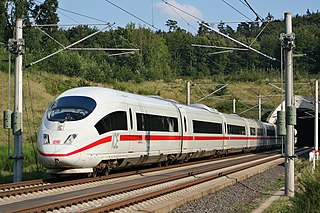
Intercity Express is a high-speed rail system in Germany. It also serves destinations in Austria, France, Belgium, Switzerland and the Netherlands as part of cross-border services. It is the flagship of the German state railway, Deutsche Bahn. ICE fares are fixed for station-to-station connections, on the grounds that the trains have a higher level of comfort. Travelling at speeds up to 320 km/h (200 mph), they are aimed at business travellers and long-distance commuters and marketed by Deutsche Bahn as an alternative to flights.

The Rhine-Ruhr S-Bahn is a polycentric and electrically driven S-bahn network covering the Rhine-Ruhr Metropolitan Region in the German federated state of North Rhine-Westphalia. This includes most of the Ruhr, the Berg cities of Wuppertal and Solingen and parts of the Rhineland. The easternmost city within the S-Bahn Rhine-Ruhr network is Unna, the westernmost city served is Mönchengladbach.

The X73900 is a diesel multiple unit (DMU) train type operated by the SNCF in France. They were built from 2001 to 2004 by Alsthom DDF. They are a version of the SNCF Class X 73500 equipped with train control systems for transborder services to Germany.

The Alstom Coradia is a family of diesel and electric multiple units for intercity and regional service manufactured by Alstom, with variants operating in Europe, North America, and Africa.
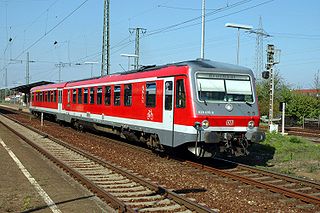
The DB Class 628 is a twin-car, diesel multiple unit operated by the Deutsche Bahn for local passenger rail services.

The DBAG Class 641 (VT641) is a class of German railway vehicle operated by Deutsche Bahn. They are diesel railcars belonging to the Alstom Coradia A TER family. Their development started as a joint project between Deutsche Bahn and SNCF, on the one hand, and the railway vehicle manufacturers De Dietrich Ferroviaire and Linke-Hofmann-Busch on the other, both being subsidiaries of Alstom.

The DR 130 family of locomotives comprises the DR Class 130, DR Class 131, DR Class 132 and DR Class 142, in USSR locomotive called TE109 and TE129.

DreiLänderBahn is the name under which HLB Hessenbahn, a subsidiary of the Hessian state railway company, Hessische Landesbahn, operates a group of regional rail services in the German states of Hesse, North Rhine-Westphalia and Rhineland-Palatinate.
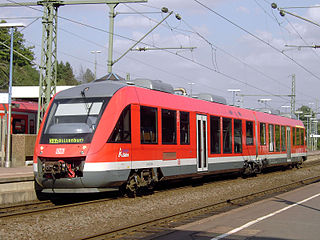
The Class 648 is a two car, diesel multiple unit operated by the Deutsche Bahn for stopping regional rail services on unelectrified lines.

Line S7 is an S-Bahn service on the Rhine-Ruhr network in the German state of North Rhine-Westphalia, between Wuppertal and Solingen. The line has been operated by Vias since 15 December 2013 at 20-minute intervals, using Alstom Coradia LINT 41 diesel multiple unit vehicles.
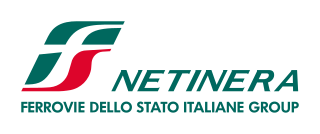
Netinera is a bus and railway company operating in Germany. It is presently a wholly-owned subsidiary of the Italian state owned railway company Ferrovie dello Stato Italiane.
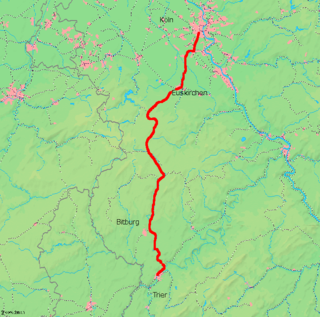
The Hürth-Kalscheuren–Ehrang railway is a non-electrified line in the German states of North Rhine-Westphalia and Rhineland-Palatinate running from Hürth-Kalscheuren via Euskirchen and Gerolstein to Trier-Ehrang through the Eifel hills.

The Class 430 EMU is an electric railcar for S-Bahn commuter networks in Germany, jointly developed by Bombardier and Alstom. The first trains went into service in 2012, replacing the Class 420 EMUs of the Stuttgart S-Bahn.
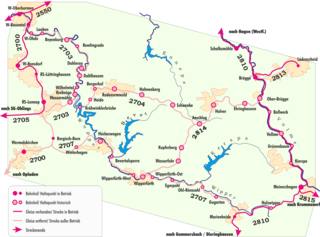
The Hagen–Dieringhausen railway is a mostly single-track and non-electrified railway line from Hagen Hauptbahnhof via Lüdenscheid-Brügge, Meinerzhagen and Gummersbach to Gummersbach-Dieringhausen in the German state of North Rhine-Westphalia.

The Alzey–Mainz railway was opened on 18 December 1871 by the Hessian Ludwig Railway, linking the two cities of Alzey and Mainz in the German state of Rhineland-Palatinate to each other.

Vectus Verkehrsgesellschaft mbH was a German transport company based in Limburg an der Lahn. In 2004, it took over the operation of a regional rail network located in the Lahn valley, the Westerwald and the Taunus, which is called the Westerwald-Taunus network. The operations of the network focused on Limburg. In 2014, the contract for these services were awarded to its main shareholder, Hessische Landesbahn (HLB) and Vectus Verkehrsgesellschaft was subsequently taken over by HLB.
The Hönne Valley Railway is a 22 km long, single-track and non-electrified branch line in the German state of North Rhine-Westphalia, running from Menden (Sauerland) to Neuenrade through the Hönne valley. It is operated as timetable route 437 from Unna via Fröndenberg, Menden (Sauerland) and Balve to Neuenrade.

The Linke-Hofmann-Busch local traffic prototype coaches were a group of passenger carriages of the Deutsche Bundesbahn.

The Intercity Nieuwe Generatie, or ICNG is an electric multiple unit trainset of the Dutch Railways. In addition to supplementing the existing intercity rolling stock, it will replace the Bombardier TRAXX locomotives and Intercityrijtuig coaches on the high-speed line between Amsterdam and Belgium. This will provide the connection that was originally planned to be provided by the Fyra service, which was cancelled in 2013.

































